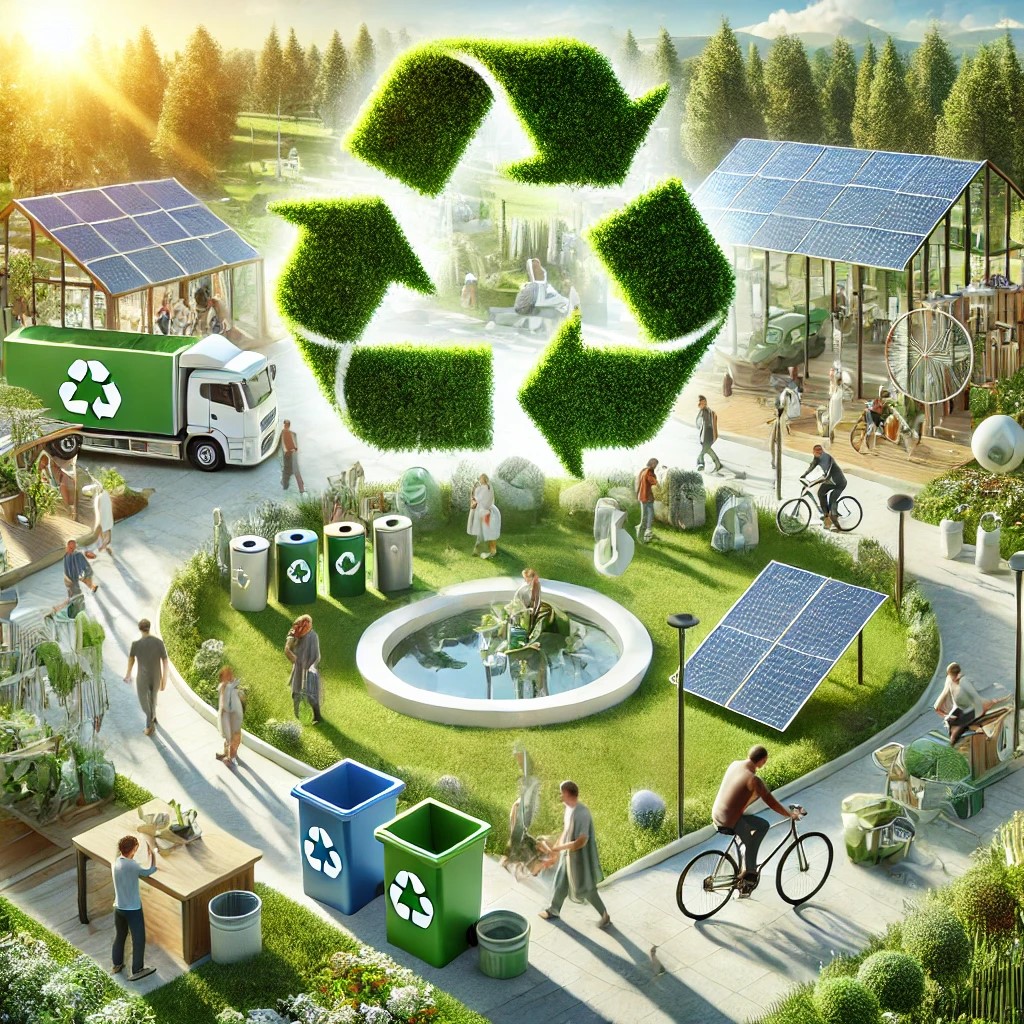
In recent years, sustainability has become imperative for companies worldwide. Among the various emerging strategies, “Circularity” is establishing itself as a revolutionary and necessary approach to tackle the environmental and economic challenges of our time. But what exactly does circularity mean, and why is it so relevant today?
Circularity, or circular economy, represents one of the most innovative and sustainable responses to the environmental and economic challenges of our time. This economic model contrasts with the traditional “produce, consume, dispose” linear approach and promotes a system where materials and resources are kept in use for as long as possible, minimizing waste and maximizing reuse. In practice, it involves creating a system where materials and products are reused, repaired, recycled, and regenerated for as long as possible.
Fundamental Principles of Circularity
One of the pillars of circularity is design for durability and reuse. Products must be designed to have a longer useful life and be easily repairable and upgradable. This requires using high-quality materials and modular components that can be replaced or improved over time without discarding the entire product. Adopting this approach not only extends the life of products but also reduces the amount of waste generated, contributing to a more efficient use of resources.
Another crucial aspect is the recovery and recycling of materials. At the end of a product’s useful life, it is essential that its components can be effectively recovered and recycled. This process reduces dependence on virgin resources, limiting the environmental impact of extracting and producing new materials. Additionally, it minimizes the amount of waste ending up in landfills, promoting a continuous cycle of resource use.
Renewable energy plays a fundamental role in circularity. To support production processes in an environmentally responsible manner, it is essential to adopt renewable energy sources. This transition not only reduces greenhouse gas emissions but also ensures long-term sustainability, aligning industrial production with global goals of reducing environmental impact.
Finally, circular business models are key to implementing circularity. Companies must innovate in their operational models, shifting from a product-selling logic to offering services. For example, rental, repair, and leasing are models that encourage the reuse and longevity of products. These approaches not only reduce waste but can also create new market opportunities and revenue streams for businesses, making them more resilient and competitive in the long term.
The principles of circularity are based on forward-looking design, efficient resource recovery, the adoption of renewable energies, and innovation in business models. These elements combined create a more sustainable economic system that benefits both the environment and companies themselves.
Benefits of Circularity
Adopting a circular model offers numerous advantages for both companies and the environment. Among the main benefits are:
Increase in Material Reuse
In recent years, we have witnessed a significant increase in material reuse thanks to various initiatives and innovations. Some examples include:
Challenges and Future Prospects
Despite numerous advantages, the transition to a circular economy presents several challenges, including the need to change consumer mindsets and behaviors, restructuring supply chains, and the need for appropriate policies and regulations that incentivize circularity. In the future, companies will need to collaborate closely with governments, institutions, and other stakeholders to overcome these challenges and create a favorable ecosystem for circularity. Technological innovation will play a crucial role in making circular processes more efficient and accessible.
Circularity is not just a trend but a necessity to build a sustainable future 🌍. Businesses, governments, and citizens must collaborate to promote circular practices, invest in sustainable technologies, and raise public awareness of the benefits of this economic model 🌱. Only through collective effort can we hope to create a truly sustainable and resilient economy 💡.
The transition to a circular economy is a challenge but also a unique opportunity to rethink our way of producing and consuming with an eye towards our planet and future generations 🌟.
Circular Team
References: